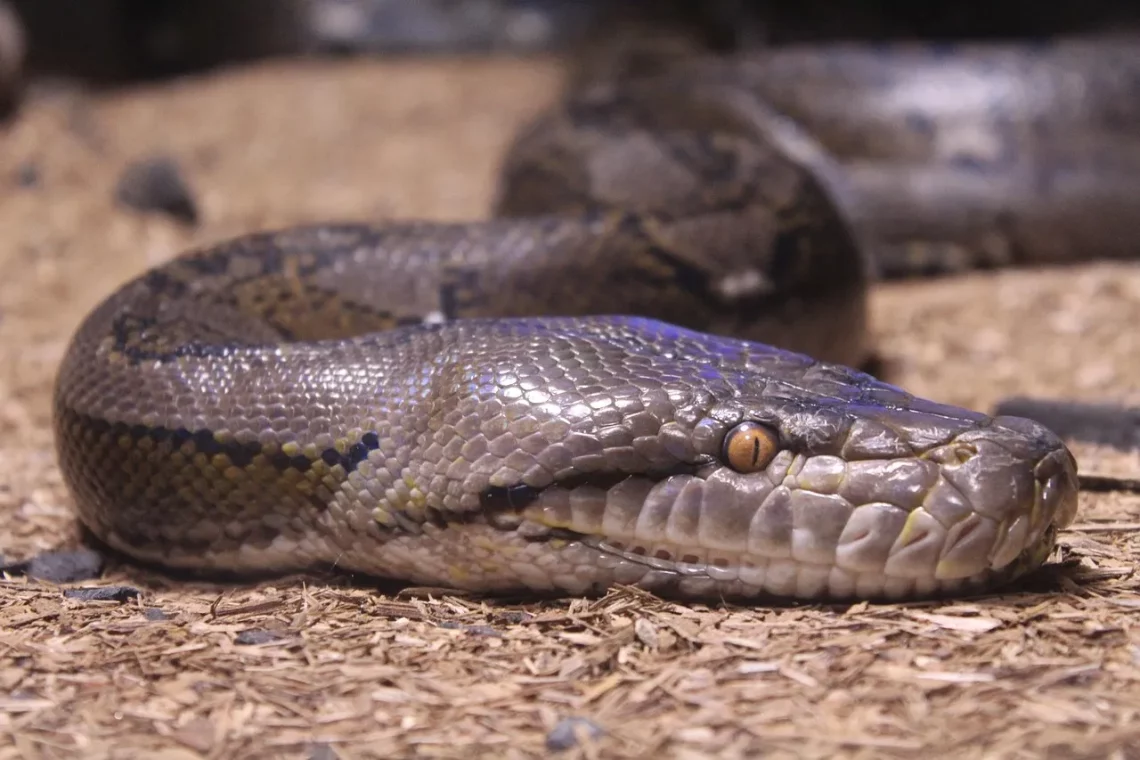
Understanding the Normal Royal Python: Care, Traits, and Habits
Reptiles have fascinated humans for centuries, and among them, the royal python, also known as the ball python, stands out as one of the most popular choices for both novice and experienced snake enthusiasts. This species, native to the grasslands and savannas of West and Central Africa, captivates with its striking appearance and relatively gentle demeanor. The royal python’s unique ability to curl into a ball when threatened not only gives it its name but also highlights its fascinating behavioral adaptations.
The allure of keeping a royal python as a pet stems from its manageable size, typically reaching lengths of 3 to 5 feet, and its generally docile nature. These snakes are known for their various morphs, which exhibit an array of colors and patterns, making each individual unique. However, owning a royal python requires more than just admiration for its beauty; it demands a commitment to understanding its care requirements, habitat, and social behaviors. Proper knowledge and preparation can ensure a happy and healthy life for this remarkable reptile, allowing for a rewarding experience for both the owner and the pet.
Essential Care Requirements for Royal Pythons
When it comes to caring for a royal python, understanding its environmental needs is crucial. These snakes thrive in a controlled habitat that mimics their natural environment. A secure enclosure is the first step in providing adequate care. A glass terrarium or a plastic container with proper ventilation can work effectively. The size of the enclosure should be appropriate for the snake’s length, typically measuring at least 40 gallons for adults.
Temperature regulation is another critical aspect of care. Royal pythons require a temperature gradient in their habitat, with one end being significantly warmer than the other. The warm side of the enclosure should be maintained between 88°F to 92°F, while the cooler side should range from 75°F to 80°F. Using heat mats or ceramic heat emitters can help achieve these temperatures. Additionally, a basking spot with a heat source is essential for digestion.
Humidity levels also play a vital role in the well-being of your royal python. Ideally, the humidity should be maintained between 50% to 60%. During shedding, increasing the humidity to around 70% can help facilitate the process. A water dish should always be available, not only for drinking but also for soaking, which aids in shedding.
Feeding is another important aspect of royal python care. These snakes are carnivorous and primarily feed on rodents. Young pythons typically eat smaller prey, such as pinky or fuzzy mice, while adults can consume larger rats. It’s essential to provide appropriately sized meals to prevent health issues. Feeding frequency varies with age; hatchlings may eat every 5 to 7 days, whereas adults can be fed every 10 to 14 days.
Regular cleaning of the enclosure is necessary to maintain a healthy environment. Spot-cleaning should be done daily, while a more thorough cleaning, including replacing substrate and disinfecting surfaces, should occur every month or as needed.
Distinctive Traits of the Royal Python
Royal pythons are known for their captivating physical traits that not only contribute to their popularity but also to their adaptability. One of the most noticeable characteristics is their coloration. While the “normal” royal python typically exhibits a pattern of black and gold or yellow, breeders have developed a variety of morphs that showcase an extensive range of colors and patterns. From the striking albino to the mesmerizing piebald, each morph offers unique aesthetics that appeal to different enthusiasts.
Beyond their appearance, royal pythons possess a unique and compelling behavioral trait: their tendency to curl into a ball when threatened. This defensive mechanism serves as a protective strategy against potential predators, allowing them to shield their vulnerable heads while exposing less of their body. This behavior is not only fascinating to observe but also highlights their instinctual responses to perceived danger.
In terms of temperament, royal pythons are known for their generally calm and docile nature. They are less likely to bite compared to other snake species, making them an excellent choice for beginners. However, it’s essential to handle them regularly to ensure they remain accustomed to human interaction. Over time, they can become quite comfortable and even enjoy being handled.
Another interesting trait of royal pythons is their feeding habits. Unlike some other snake species that may be more aggressive or opportunistic feeders, royal pythons tend to have a slower metabolism and can go longer periods without food. This trait is beneficial for owners, as it allows for a more flexible feeding schedule. However, it’s crucial to monitor their eating habits closely, as any significant changes could indicate underlying health issues.
Lastly, royal pythons are nocturnal creatures, primarily active at night. This behavior aligns with their natural habitat, where they hunt for prey in the cooler hours. Understanding their activity patterns can help owners create a suitable environment that caters to their needs.
Social Behavior and Interaction
Understanding the social behavior of royal pythons is essential for any owner looking to foster a healthy relationship with their pet. While these snakes are primarily solitary creatures in the wild, they do exhibit social behaviors when it comes to interactions with humans and, in some cases, with other snakes.
In captivity, regular interaction is beneficial for building trust. Gently handling your royal python can help it become accustomed to human presence. Start by allowing your snake to acclimate to its new environment before introducing it to handling. When you do begin handling, support its body properly and avoid sudden movements, as this can startle the snake.
It’s essential to recognize that each royal python has its unique personality. Some may be more curious and explorative, while others might be more reserved. Observing your snake’s body language can provide insights into its comfort level. Signs of stress or discomfort may include rapid tongue flicking, defensive posturing, or attempting to escape. If your snake exhibits these behaviors, it may be best to limit handling until it feels more secure.
While royal pythons are generally not social animals, they can coexist with other snakes if properly introduced and monitored. However, it is crucial to ensure that all snakes are of similar size and health to prevent stress or injury. Breeding should only be attempted by experienced keepers, as it requires a deep understanding of genetics and proper care.
In addition to handling, providing enrichment in the form of hiding spots, climbing structures, and varied substrates can help keep your royal python mentally stimulated. This stimulation can reduce stress and encourage natural behaviors, contributing to a happier and healthier life.
In conclusion, royal pythons are magnificent creatures that can make wonderful companions for those willing to invest time and care into their needs. Understanding their habitat requirements, distinctive traits, and social behaviors will pave the way for a fulfilling relationship with these captivating reptiles.
—
**Note:** This article is for informational purposes only and should not be considered medical advice. If you have health concerns regarding your pet, please consult a veterinarian.




